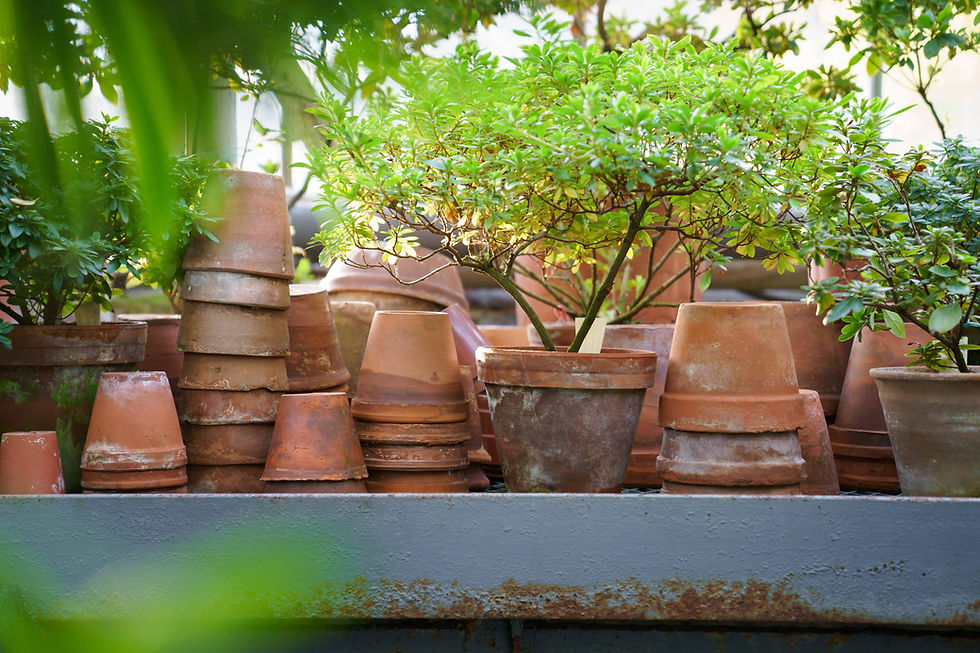A Glimpse into Minnan's Architectural WorldⅠ: Wall Bricks and Roof Tiles
- Frida Luo
- Sep 11, 2023
- 4 min read

Located in the southern part of Fujian province, China, Minnan is a fascinating region that includes cities like Quanzhou, Xiamen, and Zhangzhou. Back in the Yuan Dynasty, Quanzhou was the starting point of the famous "Maritime Silk Road." This unique position brought together different cultures, resulting in the rich and distinctive Minnan culture and its traditional red-brick houses, which are often referred to as the "Red Brick Cultural Zone." These houses, with their vibrant red bricks, represent the unique architectural style of Minnan.
In the upcoming sections, I will introduce the world of Minnan red-brick houses from four distinct categories: wall bricks, roof tiles, windows, and floor tiles.
All the building materials mentioned in this blog are available for purchase. For more product information, please contact us at info@shchanson.com."
Now, let’s begin with the wall bricks!

Beyond Facades: The Chinese Philosophy Behind Minnan's Wall Bricks
Rouge Bricks
Nestled along China's southeastern coastline, Minnan enjoys a year-round warm and humid climate, with an average annual temperature hovering around 20°C. This region falls under the classic South Asian tropical monsoon climate.
This climate has resulted in unique red and yellow soils rich in aluminosilicates and metal ions such as iron. During the firing process of red bricks in closed kilns at high temperatures, iron and oxygen undergo significant chemical reactions, resulting in the formation of ferric oxide, a classical red compound. This natural alchemy infuses Minnan red bricks with a striking red hue, often likened to the elegance of "rouge" or "胭脂" in Chinese, which has earned them the charming moniker "Rouge Bricks."

The color of these bricks is reminiscent of the Dutch red-brick architecture style. This similarity can be attributed not only to the influence of Western architecture in the Minnan region, but also to the shared climatic conditions of both regions.
In the Netherlands, particularly its western and northern regions facing the North Sea, red bricks are a practical choice due to low terrain, frequent mist, and humidity. They wick away moisture, provide durability, and are fire-resistant. Red bricks are also less susceptible to moisture-related decay than wooden flooring and resist pests.
The choice of red bricks isn't just practical; it brightens the architectural landscape, creating a vivid contrast with the damp natural surroundings and infusing warmth and vibrancy into daily life.
Swallowtail Bricks
Traditional Chinese philosophical thought advocates the process of understanding the "Tao" (道)from the essence of life itself, emphasizing the beauty of natural simplicity. In the Minnan region, the traditional swallowtail brick embodies the local reverence for the Tao of nature.
During the firing process of swallowtail bricks, artisans arrange the bricks at a 45-degree angle, using local straw and pine branches as fuel for the firing. As the bricks are fired and shaped, there will be unique black patterns imprinted where the bricks intersect. This distinctive black and red pattern emerges, creating a unique texture.

When laying bricks, the artisans would arrange the bricks in the "<" shape, resembling a swallow's tail, and this unique arrangement contributes to the charming visual effect of black and red contrast.
The color of swallowtail bricks depends on the local soil, while the patterns emerge from fallen pine branches and ashes during firing. All of this embodies the material's natural transformation, enabling one to effortlessly feel the vitality of the earth and embrace the profound concept of 'Tao' expressed through these simple bricks.
Harmonizing Utility and Beauty: Roofing Wisdom in Minnan
In the Minnan region, red roof tiles are a hallmark of architectural charm. They are usually unglazed and crafted from clay. The production process is similar to that of rouge bricks. The finest red roof tiles exude a golden hue within their deep red texture.
The roof tile craftsmanship in Minnan region encapsulates the wisdom of ancient artisans. Local artisans resourcefully utilize materials from their surroundings, continually adjusting the shape and arrangement of tiles to develop the most effective techniques in response to the area's natural and geographical conditions. These practices are aimed at fortifying the houses against typhoons and heavy rainfall while ensuring a dry interior.

Minnan red roof tiles come in two primary styles: "tegula roof tiles" and "imbrex roof tiles," which are very similar to the roof tiles used in ancient Greek and Roman architecture. By combining both Imbrex and Tegula Roof Tiles, the roof surface gives a staggered, layered effect,
which, together with the tail ridge and the decorative carvings on the roof, makes the roofs exquisite and elegant.

Tegula Roof Tiles:
Locally known as "butterfly tiles" in the Minnan dialect, these tiles are relatively flat with gentle curvature. They typically measure 240-250mm in length, 250-270mm in width, and 8-10mm in thickness.

Imbrex Roof Tiles:
Imbrex roof tiles resemble bamboo tubes with a semicircular cross-section. Historically reserved for temples, shrines, official buildings, and residences in Quanzhou and Jinjiang. The special form of the Imbrex is better able to withstand the frequent arrival of typhoons.
They typically have a height of 50mm, a length of 200mm, and a thickness of 10mm.

As we conclude our exploration of Minnan's unique wall bricks and roof tiles in this first part, don't miss the second part where we'll delve into the world of these fascinating old windows and floor tiles!
Stay tuned for more insights into Minnan's captivating architectural heritage!
I hope you enjoyed this blog! Thank you for your time.







Comments